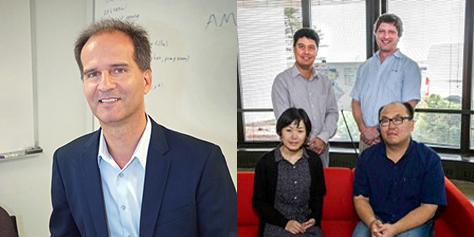A feature story published by the Brookhaven National Laboratory Media & Communications Office and shared with permission

Imagine you are standing outside. Parts of the sky are clear while others are covered with white puffy clouds. After an hour, you are asked to report how many clouds passed over you in that time period. While your count might provide a good estimate of the cloud coverage in your particular location, it would not be totally accurate because of subjective human judgment (is this a cloud?) and it would not necessarily be representative of the coverage in the larger surrounding area.
This analogy highlights two challenges that atmospheric sensors face: sensitivity bias and location bias. The type of sensor used to observe clouds (e.g., radar, lidar), the location of the instrument, and its mode of operation (e.g., pointing direction) can impact cloud measurements. For example, a profiling radar that samples only the atmospheric column that passes over its location will provide a very different answer from a scanning radar that samples a larger area. Simultaneously, the distance of the clouds from the radars determines if the clouds will be detected or not because radar sensitivity decreases with distance.
To assess if observational systems are capturing an accurate or skewed picture of the atmosphere, scientists started creating instrument simulations that can reproduce the technical characteristics of the sensors (e.g., sensitivity, resolution), their interaction with the clouds (e.g., scattering, absorption), and their sampling strategy and placement in space.
Understanding Cloud Processes

Clouds reflect sunlight back to space, trap thermal radiation emitted by the Earth’s surface, produce precipitation, and carry moisture, so they have a significant impact on weather and climate. But the behaviors of clouds are still poorly understood. Research conducted through the U.S. Department of Energy’s (DOE) Atmospheric System Research (ASR) program and at DOE’s Atmospheric Radiation Measurement (ARM) Facility aims to improve knowledge of key cloud processes and interactions that affect Earth’s energy balance (incoming sunlight and outgoing thermal radiation) and water cycle.
“Comparing synthetic instrument observations to the real observations helps us determine if we are effectively sampling critical processes such as the convective motions of deep precipitating clouds,” says Pavlos Kollias, an atmospheric scientist at Brookhaven National Laboratory, who leads DOE’s ASR Radar Science Group.
Simulating Radar Observations
A few years ago, Kollias and his research assistant Aleksandra Tatarevic at McGill University (Kollias is still an adjunct p developed the initial version of the Cloud Resolving Model Radar SIMulator (CR-SIM), which generates a virtual (synthetic) view of what a radar would see if incorporated into an atmospheric model that resolves clouds.
“Though models can simulate clouds with very high resolution, the problem is how to validate the simulation—how well does it represent reality?” said postdoctoral research associate Mariko Oue of Stony Brook University’s School of Marine and Atmospheric Sciences, who recently updated CR-SIM to be compatible with additional sensors, including lasers that probe the atmosphere.
Read the full feature on the Brookhaven website.
Learn more about Brookhaven’s Cloud Processes Group.
Learn more about the Cloud Resolving Model Radar SIMulator (CR-SIM).
# # #
This work was supported by the U.S. Department of Energy’s Office of Science, Office of Biological and Environmental Research as part of the Atmospheric System Research Program.

